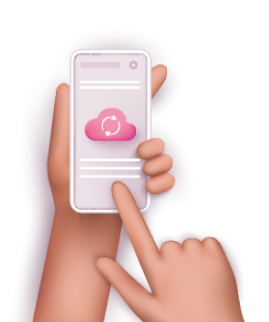Reactive customer care is broken. Despite the variety of engagement channels that can get problems resolved, the result is often the same: wasted time on hold, ineffective customer support reps and problems that persists until the frustration level builds to the point-of-no-return churn.
This is an all-too-familiar scenario. Internet service providers (ISPs) establish and maintain vast, expensive customer care departments, replete with advanced telephone equipment, recording facilities, storage servers and more to address the countless problems of their millions of subscribers. Despite the heavy, ongoing investment, subscribers dread contacting their ISP’s customer care. Why wouldn’t they?
Subscribers don’t call to announce that everything is OK. They call when they are confronted with a problem that interrupts their internet pleasure. Try as they may, they cannot figure it out. By the time they surrender and pick up the phone, they are upset and ready to strangle someone.
Then after 10 minutes on hold, with awful background Muzak (interrupted periodically by a recorded voice making irrelevant announcements), a human finally gets on the phone. The momentary relief quickly gives way to the realization that this “tier-1 support person” is a glorified desk clerk who doesn’t know much about the internet, home routers, Wi-Fi or connected devices. There is that ineffective little script to follow that includes turning the router off and on and watching lights blink red, yellow and green, followed by the innocuous question: Did that fix the problem (despite the fact the caller already tried this multiple times before making the call)? Then comes the inevitable transfer up the support chain, more time, more talk and more frustration.
But it really isn’t the customer support reps’ fault.
Even the current state of technology isn’t helping all that much. The upsurge in AI research over the last decade has given rise to a variety of conversational interfaces bolstered by machine learning and natural language processing. The idea behind these “chatbots” is to relieve the phone pressure on the call center and, somehow, help subscribers fix problems without having to go through the grim telephone scenario. The technology is impressive, but the results are not.
“You end up fighting with a bot for 10 minutes before you get to speak to an agent,” a senior manager told ComputerWeekly. “Sometimes, the bots are useful but oftentimes they are frustrating.”
So, it’s not the CSRs. It’s not the phone equipment. It’s not the chatbot.
It’s the reactive care paradigm! Too late to rescue the situation, a reactive support engagement is in the churn zone even before it begins.
ISPs need to transition to a new proactive care paradigm to fix this broken method of technical support.
What Can Proactive Care Do?
Proactive care means that you take the initiative to do everything possible to ensure a smooth quality of experience in each connected home. When problems invariably occur, you catch them automatically as they happen and don’t wait in reaction mode for frustrated subscribers to scream bloody murder.
Proactive care makes subscribers far more satisfied with their internet service. It drastically reduces the surfeit of negative engagements that plague the call center. We know what that will do to retention and churn.
Proactive care is an opportunity to keep subscribers informed about conditions before they become problems. The smartphone is the perfect medium for this.
Here is a case where the internet service provider shares information with numerous subscribers via their smartphones about a problem beyond the home: Facebook suffers a widespread outage, prompting thousands of support calls to the ISP customer care center for a problem that it can’t address. Wouldn’t it be nice if, upon spotting this situation, the ISP could send quick alerts to all affected homes, letting them know what’s going on and halting the deluge of support calls?
Here is another case that addresses a problem within the home, one that the ISP can resolve through a simple, helpful notification to the subscriber’s smartphone: “Did you know that your laptop will communicate faster if you connect it to the 5 GHz band? Tap here to make it happen.”
ISPs can also share information proactively for upsell opportunities that subscribers will be eager to hear about: “Your smart TV is too far from the router to get a sufficient signal. Would you like a small extender that will fix the problem and is easy for you to install yourself? Tap to order.”
The Proactive Paradigm Is Here
Thanks to breakthrough technologies that generate and analyze hoards of data in real time and bring intelligence from the cloud to the smartphone, proactive care is coming to internet service. It’s the “killer app” that will relieve ISPs of much of the cost and burden of maintaining customer care centers. It will give subscribers the positive feeling that they are being taken care of by their ISP.
Making The Transition From Reactive To Proactive Care
At the foundation of the transition to proactive care is an enabling discipline called decision intelligence, defined by Gartner as a “decision-making techniques [that bring] multiple … disciplines together to design, model, align, execute, monitor and tune decision models and processes.”
To adopt DI, ISPs need to increase their investment in data-centric solutions like close-to-customer sensors that can generate vast volumes of real-time usage, performance and behavior data for storage in the cloud. The data is immediately available for advanced analytics that feeds insights to business-intelligence dashboards, allowing deep and wide views into the ways customers experience their internet service. From there, you must lean on data scientists in customer success, marketing, product development and engineering departments who can segment the data to glean insights into specific audience segments such as new users, common problems, effects of network changes on customer experience and more.
Armed with these understandings, ISPs don’t have to wait in reaction mode for support calls. Instead, they can proactively engage related groups (e.g., subscribers suffering from a common type of problem) to offer relevant products, packages or support. Suddenly, subscribers will then see their ISPs more as helpful partners than as reactive adversaries.





